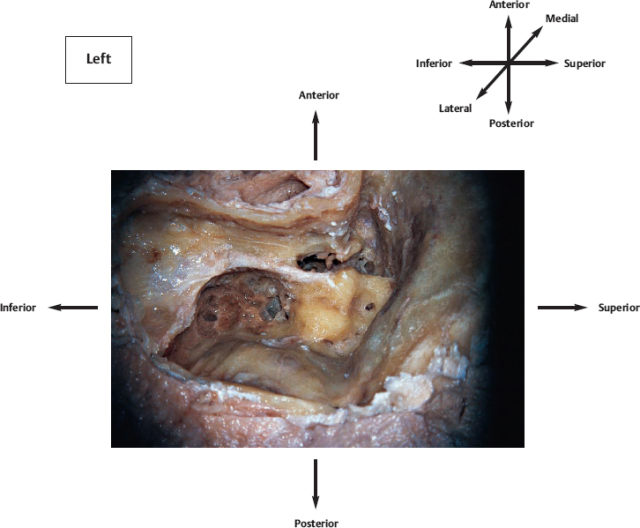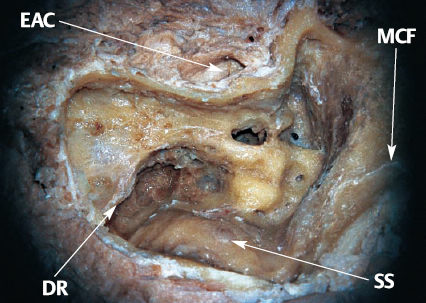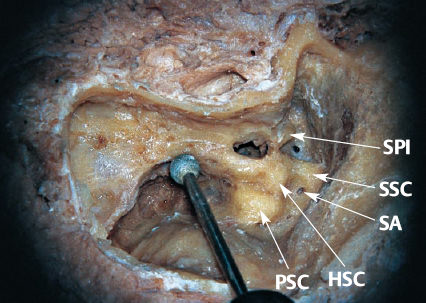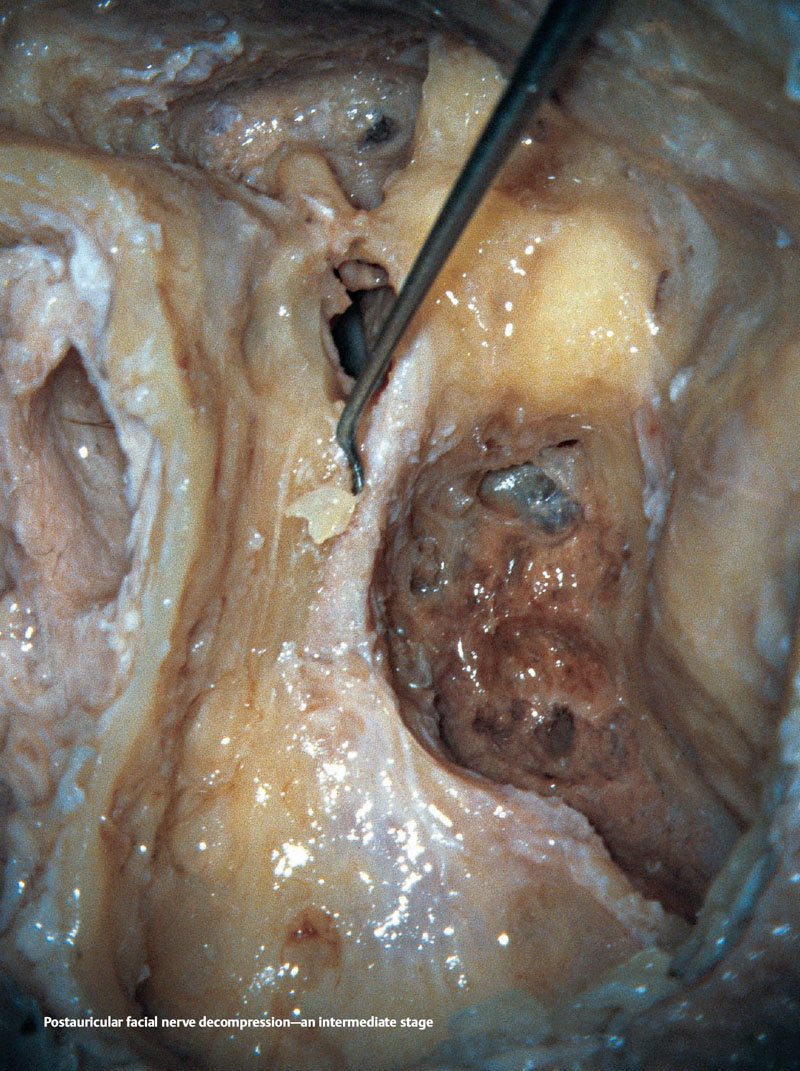22 Postauricular Facial Nerve Decompression Following a cortical mastoidectomy, exposure and decompression of the tympanic and mastoid segments of the facial nerve. It is also called transmastoid facial nerve decompression. Iatrogenic facial paralysis and facial paralysis due to cholesteatoma are the main indications. It is also undertaken for facial paralysis resulting from a transverse fracture, as part of a combined procedure. The cortical mastoidectomy including posterior tympanotomy has been completed. The facial canal and all three semicircular canals have also been skeletonized. The temporal bone is ready for the next steps of postauricular facial nerve decompression. DR: Digastric ridge EAC: External auditory canal MCF: Middle cranial fossa (dural plate) SS: Sigmoid sinus (dural plate) Drilling with a medium-sized diamond burr, the digastric ridge is followed anterosuperiorly to expose the periosteum of the stylomastoid foramen, which is continuous with the mastoid facial canal. The critical structures are shown in the figure. II: 3–4mm diamond burr MIL: Periosteum of stylomastoid foramen HSC: Horizontal semicircular canal PSC: Posterior semicircular canal SA: Subarcuate artery SPI: Short process of incus SSC: Superior semicircular canal Drilling is continued until the mastoid segment of the facial nerve remains covered only by an eggshell-thin layer of bone. Note the relationship of the mastoid segment of the facial nerve, the periosteum of the stylomastoid foramen, and the digastric ridge. DR: Digastric ridge EG: External genu FR: Facial recess MFN: Mastoid facial nerve PSF: Periosteum of stylomastoid foramen Definitions and Tips
Definition
Indications
Anatomical Orientation

Surgical Steps



Postauricular Facial Nerve Decompression
Only gold members can continue reading. Log In or Register to continue

Full access? Get Clinical Tree



